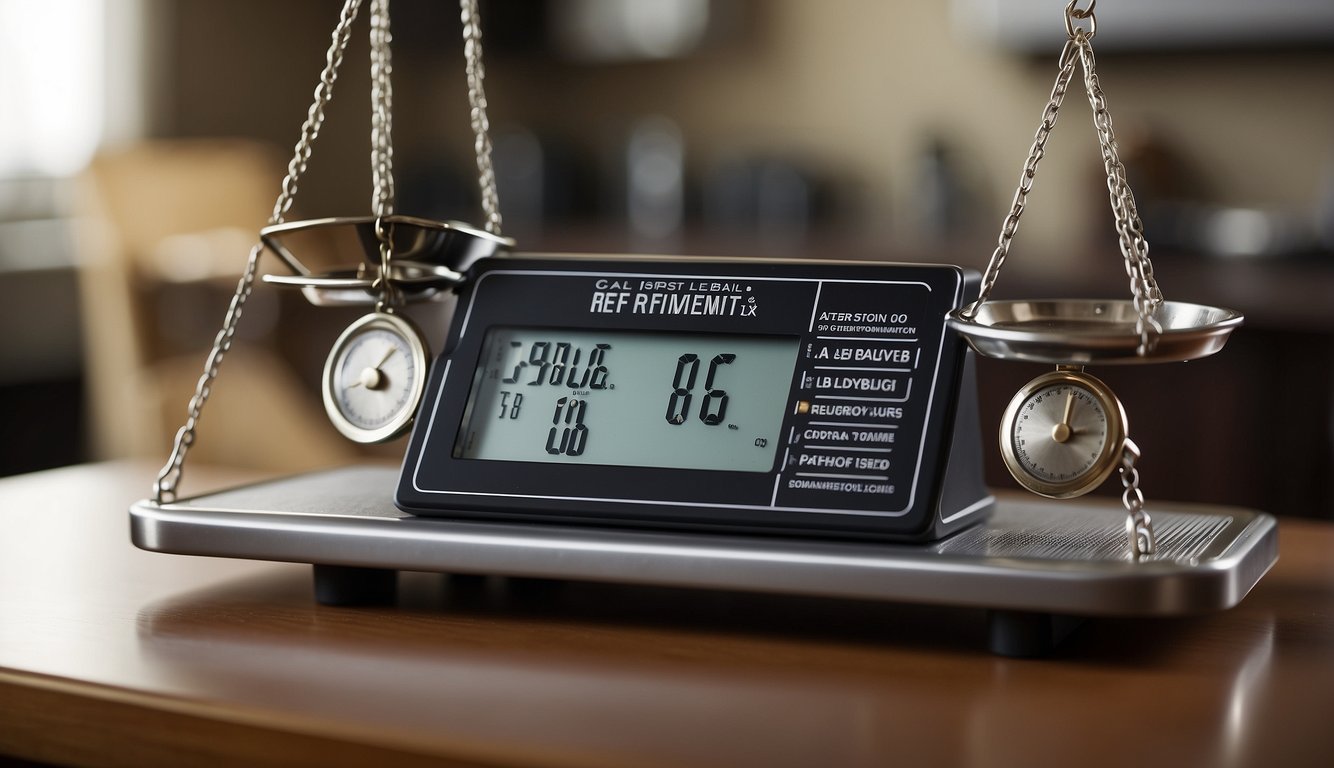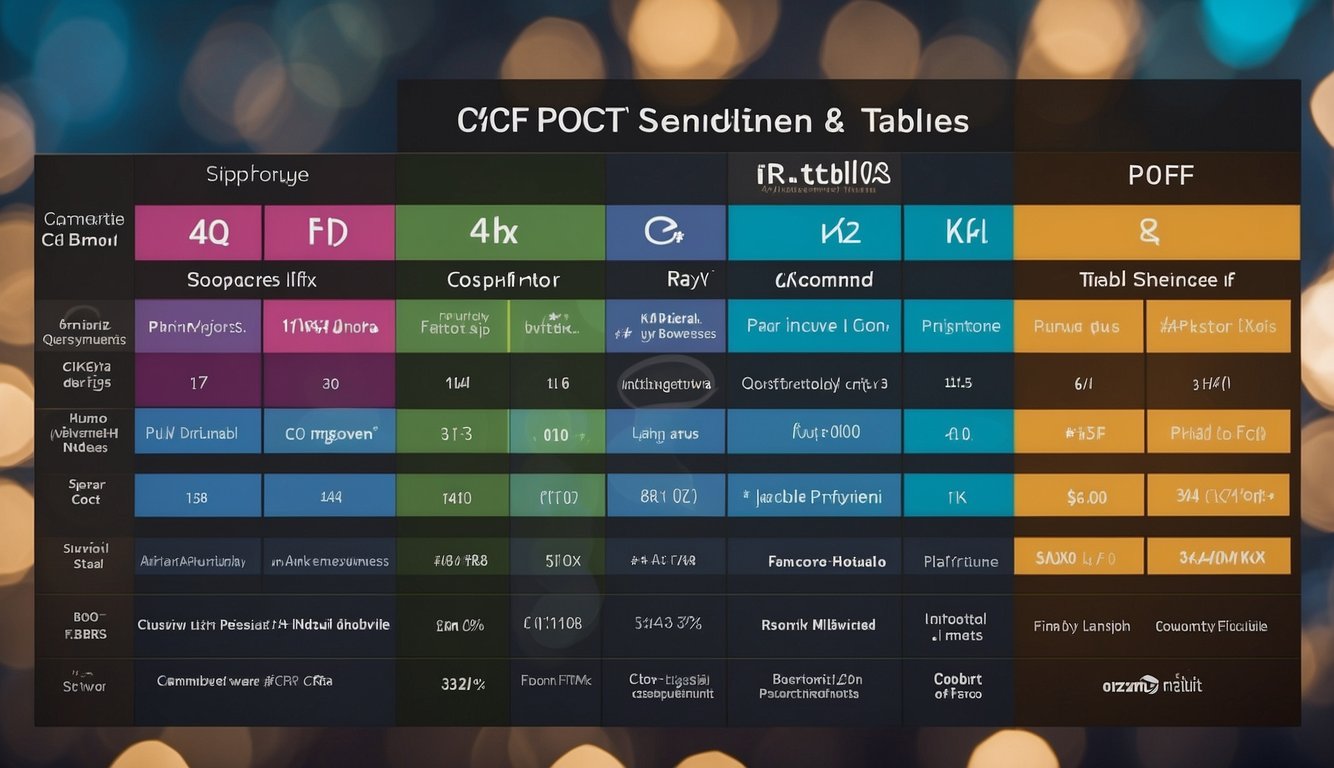Are you looking to compare SRS Singapore vs CPF to determine the best option for your retirement planning?
Whether you are a Singaporean resident or a foreigner living in Singapore, understanding the differences between SRS and CPF is essential to make an informed decision. Both schemes offer different features, benefits, and drawbacks to consider before choosing.

In this article, we will review and compare SRS Singapore vs CPF, highlighting each scheme’s key features, benefits, and limitations. We will also provide you with expert insights and tips to help you maximise your retirement wealth and make the most of your savings and investments. So, keep reading to learn everything you need about SRS and CPF in Singapore.
Key Takeaways
- Understand the differences between SRS and CPF to make an informed decision for your retirement planning.
- Compare the features, benefits, and limitations of SRS and CPF to determine which suits your needs.
- Maximise your retirement wealth by taking advantage of the available options, such as insurance and protection within SRS and CPF.
Understanding SRS Singapore vs CPF

If you are a Singaporean or a foreigner working in Singapore, you must consider your retirement savings. The Singapore government has two main retirement plans – the Supplementary Retirement Scheme (SRS) and the Central Provident Fund (CPF).
This section will provide an overview of both plans to help you understand them better.
What Is the Supplementary Retirement Scheme (SRS)?
The Supplementary Retirement Scheme (SRS) is a voluntary scheme that encourages individuals to save for retirement. It is administered by the Inland Revenue Authority of Singapore (IRAS). You can open an SRS account with any of the three local banks – DBS, OCBC or UOB. You can contribute up to $15,300 per year if you are a Singaporean or Permanent Resident and up to $35,700 per year if you are a foreigner.
Contributions to your SRS account are eligible for tax relief. This means you can reduce your taxable income by the amount you contribute to your SRS account, subject to a cap. The tax relief cap is $80,000 annually for Singaporeans and Permanent Residents and $150,000 annually for foreigners.
Overview of the Central Provident Fund (CPF)
The Central Provident Fund (CPF) is a mandatory social security savings scheme for Singaporeans and Permanent Residents. Both the employer and employee make CPF contributions, and the funds are divided into three accounts – the Ordinary Account (OA), Special Account (SA), and Medisave Account (MA).
The OA is used for housing, education, and investment. The SA is for retirement savings, while the MA is for medical expenses. CPF contributions are based on age and income; current contribution rates are 17% for employees and 20% for employers.
In conclusion, understanding the differences between SRS and CPF is crucial for Singaporeans and foreigners working in Singapore. Both plans offer tax relief and can help you save for retirement. However, SRS is a voluntary scheme, while CPF is mandatory.
Comparing SRS Singapore vs CPF Features

If you plan to retire in Singapore, you may have heard of two key acronyms – SRS and CPF. These are like the Batman and Superman of Singapore’s retirement landscape, each with unique superpowers. In this section, we will compare the features of SRS and CPF to help you understand which one is better suited to your retirement planning needs.
SRS Singapore vs CPF: Contribution Limits and Tax Benefits
SRS and CPF offer tax benefits to encourage individuals to save for retirement. However, the contribution limits and tax benefits differ between the two schemes.
With SRS, you can contribute up to S$15,300 per year if you are a Singaporean or permanent resident and up to S$35,700 per year if you are a foreigner. The contributions are tax-deductible, meaning you can enjoy immediate tax savings. However, when you withdraw your savings, you must pay income tax on the withdrawals.
On the other hand, CPF contributions are mandatory for Singaporeans and permanent residents. The contribution rates vary depending on your age and income, but you can contribute up to the CPF Annual Limit, currently set at S$37,740. CPF contributions are also tax-deductible, and you can enjoy personal income tax relief on your contributions, subject to a cap.
SRS Singapore vs CPF: Withdrawal Conditions and Penalties
The withdrawal conditions and penalties also differ between SRS and CPF.
With SRS, you can withdraw your savings anytime, but you must pay income tax on the withdrawals. However, if you start your savings before the age of 62 or the Prescribed Retirement Age, whichever is earlier, you must pay a penalty fee of 5% of the withdrawal amount. There are some exceptions to this penalty fee, such as withdrawals on medical grounds or bankruptcy.
With CPF, you can only withdraw your savings under certain conditions, such as reaching 55 or leaving Singapore permanently. If you start your savings before age 55, you will need to pay a penalty fee, and your savings will be subject to withdrawal limits.
SRS Singapore vs CPF: Investment Options and Flexibility
SRS and CPF also differ in their investment options and flexibility.
With SRS, you have more investment options and flexibility. You can invest your SRS savings in various investment products, such as unit trusts, bonds, stocks, ETFs, fixed deposits, Singapore Savings Bonds, REITs, RSS, and SGS. You can also switch between investment products without incurring any fees.
With CPF, you have limited investment options, and your savings are invested in the CPF Investment Scheme (CPFIS). The CPFIS offers a range of investment products, such as unit trusts, ETFs, and investment-linked insurance products. However, there are restrictions on the amount you can invest in each product, and you may need to pay fees for certain transactions.
In conclusion, SRS and CPF have their strengths and weaknesses regarding retirement planning. When deciding which scheme to use, you should consider your personal circumstances, investment goals, and risk tolerance.
SRS Singapore vs CPF: Maximising Your Retirement Wealth

Regarding retirement planning, Singapore has two central savings schemes: the Supplementary Retirement Scheme (SRS) and the Central Provident Fund (CPF). Both schemes offer unique benefits and features to help you maximise your retirement wealth.
Strategies for SRS Contributions and Investments
One strategy for maximising your retirement wealth is to make regular SRS contributions and invest in suitable investment products. With SRS, you can enjoy tax savings on your contributions and defer your tax payment until withdrawal. You can also choose from various investment instruments, including robo-advisors, cash management accounts, and other investment products.
To make the most of your SRS contributions and investments, you may want to work with a wealth planning manager who can help you identify suitable investment products and manage your portfolio.
Optimising CPF Accounts for Retirement
CPF is another critical component of your retirement planning. You can use your CPF savings to build up your Retirement Account (RA) and enjoy a steady income stream during retirement. To optimise your CPF accounts for retirement, you may want to consider making top-ups to your CPF accounts and transferring funds from your Ordinary Account (OA) to your Special Account (SA) or RA.
You can also choose from various investment options for your CPF savings, including the CPF Investment Scheme (CPFIS) and the CPF Investment Account (CPFIA). These investment options can help you grow your CPF savings and achieve your retirement goals.
SRS Singapore vs CPF: Tax Planning and Savings
Tax planning is an essential aspect of retirement planning. With SRS, you can enjoy tax savings on your contributions and defer your tax payment until withdrawal. You can also use your CPF savings to enjoy tax relief and reduce taxable income.
To make the most of your tax savings, you may want to understand the tax rates and rules for each year of assessment and ensure that you are classified as a tax resident in Singapore.
In conclusion, maximising your retirement wealth requires a comprehensive approach that involves both SRS contributions and investments and CPF optimisation. By working with a wealth planning manager and understanding the tax rules and rates, you can achieve financial security and peace of mind during retirement.
Insurance and Protection Within SRS Singapore vs CPF

Regarding retirement planning, it’s important to consider insurance and protection options within your savings schemes. SRS and CPF offer various insurance policies to help you protect your assets and loved ones.
Insurance Policies Through SRS
SRS account holders can use their SRS funds to purchase various insurance policies, including life, health, and critical illness insurance. These policies can help financially protect you and your family in unforeseen circumstances.
One advantage of using SRS funds to purchase insurance policies is that it can help reduce your taxable income. Premiums paid for certain insurance policies are tax-deductible up to a specific limit. However, it’s important to note that not all insurance policies are eligible for tax relief.
CPF’s Integrated Shield Plans
CPF members can also purchase Integrated Shield Plans (IPs) to supplement their MediShield Life coverage. IPs provide additional coverage for hospitalisation and medical expenses and are offered by private insurers.
Various types of IPs are available, each with different coverage and premiums. Researching and comparing other plans is essential before choosing one that suits your needs and budget.
One advantage of purchasing an IP through CPF is using your CPF funds to pay for the premiums. This can help you save on out-of-pocket expenses and cover your medical expenses without affecting your retirement savings.
In summary, both SRS and CPF offer insurance and protection options to help you safeguard your assets and prepare for the future. Consider speaking to a financial adviser to learn more about the policies available and how they can fit into your retirement plan.
SRS Singapore vs CPF: The Future of Retirement in Singapore
Retirement is an exciting and essential milestone in your life. It is a time when you can finally relax and enjoy the fruits of your labour. However, it is also when you need enough money to support yourself and your loved ones. In Singapore, retirement planning is a crucial aspect of financial planning.
With the rising cost of living and increasing life expectancy, it is more important than ever to start planning for retirement.

SRS Singapore vs CPF: Trends in Retirement Savings
According to SingStat, the average life expectancy in Singapore is 84 years. This means you may need to save more money to support yourself during retirement. One way to do this is by contributing to your CPF account. CPF is a mandatory retirement savings plan for all Singaporean citizens and permanent residents. It is a great way to save for retirement, offering a guaranteed interest rate and tax relief.
Another trend in retirement savings is the rise of investment platforms like Endowus and Stashaway. These platforms offer a range of investment products to help you grow your retirement savings. They also offer lower fees than traditional investment products, making them popular among millennials.
Innovations in Investment and Savings
Innovations in investment and savings are changing the way we plan for retirement. For example, the Supplementary Retirement Scheme (SRS) is becoming popular for Singaporeans who want to save more for retirement. SRS offers tax relief and a range of investment options, making it attractive for those who want to grow their retirement savings.
Another innovation in retirement savings is the rise of robo-advisors. Robo-advisors like Stashaway and Endowus use algorithms to create personalized investment portfolios for their clients. This makes it easier for people to invest their money and grow their retirement savings.
In conclusion, the future of retirement in Singapore looks bright. With the rise of investment platforms and innovations in retirement savings, planning for your retirement is easier than ever. Whether you choose to invest in CPF, SRS, or other investment products, starting planning for your retirement as early as possible is crucial.
Frequently Asked Questions

What are the exciting benefits of topping up my CPF compared to SRS?
Topping up your CPF account is a great way to save for retirement. CPF contributions are mandatory for all Singapore citizens and permanent residents, offering a guaranteed interest rate higher than most savings accounts.
The CPF also offers a range of investment options, including stocks, bonds, and unit trusts.
Can you highlight the dos and don’ts for effectively managing CPF and SRS contributions?
When managing your CPF and SRS contributions, ensuring you contribute the correct amount is vital. You should also be aware of the contribution limits and the tax implications of your contributions.
Reviewing your investment options regularly is essential to ensure you get the best returns.
What’s the buzz about the tax relief when contributing to an SRS account?
One of the key benefits of contributing to an SRS account is the tax relief you can receive. When you contribute to an SRS account, you can claim a tax relief of up to $15,300 annually. This can help to reduce your taxable income and lower your tax bill.
How does the CPF Investment Scheme differ from an SRS account, and which one should I be thrilled about?
The CPF Investment Scheme (CPFIS) and SRS accounts are both investment options that are available to Singapore residents. The CPFIS allows you to invest your CPF savings in a range of investment products, while the SRS account is designed specifically for retirement savings.
The choice between the two will depend on your investment goals and risk tolerance.
Are there any drawbacks to an SRS account that I should know before diving in?
One potential drawback of an SRS account is that you will need to pay tax on your withdrawals when you retire. This means you must plan your withdrawals carefully to avoid paying too much tax.
Additionally, the SRS account is penalised for early withdrawals, so you should only contribute to an SRS account if you are sure you will not need the money before you retire.
Regarding SRS accounts, which is the best choice for savvy savers?
Both CPF and SRS accounts have unique benefits and drawbacks, so the choice between them will depend on your circumstances. If you are looking for a guaranteed investment return, CPF may be the better choice.
However, an SRS account may be the better choice if you are looking for tax relief and more flexibility in your investment options. Ultimately, the best choice will depend on your investment goals, risk tolerance, and overall financial situation.

